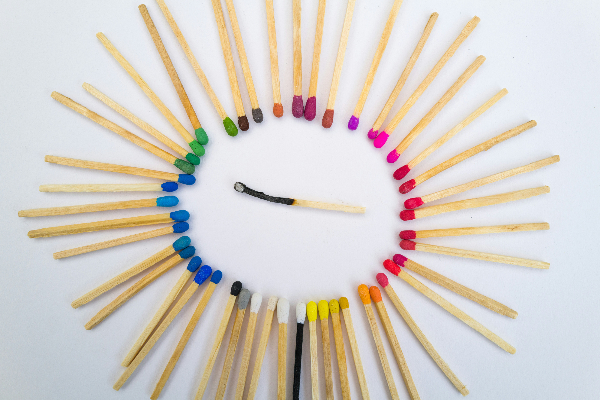Doing the Work that Matters

Working with educators is probably the favorite part of my job. They are committed, passionate and courageous. They want to get better at teaching, because they care about their students’ wellbeing and success. They are a force for good.
Last week, I was fortunate to spend 2 days with a fantastic group of new teachers. They reminded me that supporting the social and emotional growth of adults, children and youth is doing the work that matters. It touches human hearts with long-lasting effects. It is time well spent.
As you start the new school year, you probably have a long list of things to prepare and get done during the first few weeks. If you are feeling excited and overwhelmed at the same time, I would encourage you to look at your list and consider:
What’s the work that matters?
Then, prioritize based on these insights. Let yourself be driven by the work that is most important for yourself as an educator, and for your students. Does it change your priorities? Give yourself permission to redo your list based on this question!
In my forthcoming book, Teaching with the HEART in Mind, I explore one of the most important lessons that I have learned growing my own social and emotional skills-there is nothing wrong with having emotions, both pleasant and unpleasant. We tend to judge ourselves for experiencing embarrassment, fear, anxiety… as if it were bad to feel these emotions. A big part of teaching SEL is helping children, youth and adults to approach emotions without judgement. Here’s a snippet about this. Let me know how you may incorporate this with yourself and your students during the first few weeks of the school year. I love hearing from you!
Honoring emotions is an important skill to increase self-awareness and develop a stronger sense of confidence, and it is a building block for the rest of the competencies in the HEART model. Honoring your Emotions means naming, interpreting and appropriately communicating feelings.
No judgment. As previously mentioned, emotions are data; they can provide valuable information which can help us to make better decisions. At the same time, if we don’t have tools to process them, they can be confusing and make us feel out of control. Children and youth may feel the need to avoid those strong emotions that feel uncomfortable: fear, anger, embarrassment. The reality is though, there is no way to avoid our feelings. In fact, it is good and healthy for kids to feel and express these feelings. An important message in teaching students to honor their emotions is this: there is nothing wrong with having these emotions; feelings are not good or bad, they are just information.
This is something that adults often forget. Imagine a child sharing with her gymnastics coach that she is nervous about the upcoming gymnastics competition. The coach looks at her with a smile and says: “Don’t be nervous, everything will be fine. I will be there with you.” Although the coach’s intention is comforting the child, he is invalidating the kid’s feelings. Like in the earlier example where the parent left the room when the kid was upset, this child may be learning that she shouldn’t feel nervous. A better way to respond to the child would be:
“I understand you are nervous. It is okay. If I were competing, I would probably be nervous too. Do you remember when we had the Fall Festival? You were nervous then too, right? Do you recall what you did to calm down? (Coach waits for the child to respond) Oh, you took some deep breaths. That’s a great strategy. Would you like us to do it together? I will be there with you.”
Validating the child’s experience is a key part of this process, as we want children and youth to regularly tune in to their emotions. If we judge how kids feel (“you shouldn’t feel that way”), they will be less likely to develop their emotional literacy and ability to manage their emotions. Validate first, then help them cope and process the emotion. Finally, support them to interpret and communicate.
To a productive and joyful school year! Keep me posted on your SEL progress, and get in touch if you need any additional support.
I’ll be sharing another excerpt soon. Stay tuned!
Subscribe to the HEART in Mind Newsletter
Research-Based Strategies for your SEL Toolbox









